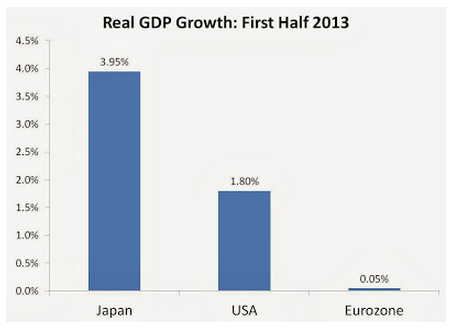Is unemployment overdetermined?
There’s been a lot of recent discussion of long term unemployment. I would caution against putting too much weight on any single factor. For instance, the drop in the labor force participation rate is partly due to boomers retiring, young people staying in school, and the unemployed going on disability. But none of those factors plays a dominant role.
Another mistake is that people sometimes forget that unemployment can be “overdetermined,” i.e. that multiple factors are each powerful enough to explain most unemployment. I hate to pick on Kevin Erdmann, because his post is actually one of the best I’ve read on the subject:
Upon further reflection, I think the approx. .75% of age-related unemployment, anomalous to the recent recession, which I found in the demographics section, is probably closely related to the .7% excess unemployment that I found in the later section on EUI related to excess unemployment duration above 26 weeks. So, in total, of the approx. 5% in cyclical unemployment that we saw at the peak, I am attributing approx. .5% to age demographics and at least .75% to EUI. This leaves 3.75% attributable to other factors, although EUI would likely be responsible for some of the remaining 3.75% in ways that I haven’t been able to isolate here.
Those numbers sound plausible to me, however be careful when partitioning the effects of various factors. To see why let’s go back to my “musical chairs model” of recessions. Suppose 10o people play the game of musical chairs, but there are only 95 chairs to sit in. When the music stops 5 people will end up sitting on the floor.
Each time the music stops, a different 5 people will be sitting on the floor. However it is possible that some people will end up missing out 2 or even 3 times in a row, particularly if there are differences in quickness and agility among the players. By analogy, the 5% frictional unemployment we observe will represent different people each year, although less skilled workers are more likely to show up multiple times.
Now assume two things happen at once. The number of chairs is reduced from 95 to 90, and the people who end up sitting on the floor each time have heavy lead weights attached to their feet. They will be less agile, and thus far more likely to end up on the floor multiple times in a row. However by construction the lead weights have no impact on the total number of people who sit on the floor. If there are 90 chairs, then 10 people sit on the floor. End of story.
This is essentially Paul Krugman’s argument for why extended UI benefits don’t raise unemployment in a recession. The reduction in chairs from 95 to 90 is analogous to the reduction in the employment rate from 95% to 90% when NGDP falls very sharply and nominal wages are sticky. The lead weights are like the disincentive effects of extended UI, which makes it less likely that those workers will find new jobs. (A better analogy might be if those sitting on the floor have soft cushions affixed to their rear ends, to making sitting on the floor less painful. So they don’t try as hard as the other players.)
I’ve challenged Krugman’s argument in the past, but there is clearly a grain of truth in this sort of reasoning. Just because a study shows that the unemployed are suddenly consisting disproportionately of the long term unemployed, as compared to past recessions, doesn’t really prove that the factors leading to long term unemployment have any effect on the overall unemployment rate. They might, but that fact would have to be established in some other way. Unemployment might be overdetermined, i.e. without extended UI there would but just as many unemployed, albeit a different mix of people and durations, and for a different reason.
The problem with my simple example is that extended UI benefits probably do reduce the number of chairs, by making nominal wages less more sticky than if an army of unemployed workers were desperate to find new jobs. Disability benefits and boomer retirement also have that effect, BTW. And if wages are more sticky then nominal GDP shocks have bigger effects on employment than otherwise.
In the end I find the 0.50% and 0.75% figures to be plausible, but they don’t necessarily imply that the remaining 3.75% is an upper limit to the part of excess unemployment that is due to effects of deficient demand. One problem is overdetermination, as I’ve just showed. The other is endogeniety. The extend UI program was itself caused by the demand shock, and would probably be eliminated if demand returned to normal.
Still, it’s a useful exercise to partition the various factors as well as we can, if only because Congress needs accurate policy counterfactuals when making the decision as to whether or not to extend the extend UI benefits. So I applaud Erdmann’s thoughtful post.
PS. In the final paragraph I am assuming that the Dems in Congress are Matt Yglesias-types and the GOP is composed of a bunch of Tyler Cowens. Both groups want to maximize aggregate utility, but disagree slightly on the size of disincentive effects. I think that’s a reasonable description of Congress these days, isn’t it?
PPS. I may have been unfair to Erdmann, as the final sentence I quote suggests that he understands the overdetermination issue.
PPPS. Here’s my favorite part of the Erdmann post:
Here’s the kind of reminder that makes Scott Sumner slap his forehead: The EUI was instituted in June 2008 when the unemployment rate was 5.6%. At the time, the Fed Funds rate was still at 2%.
HT: Tyler Cowen


